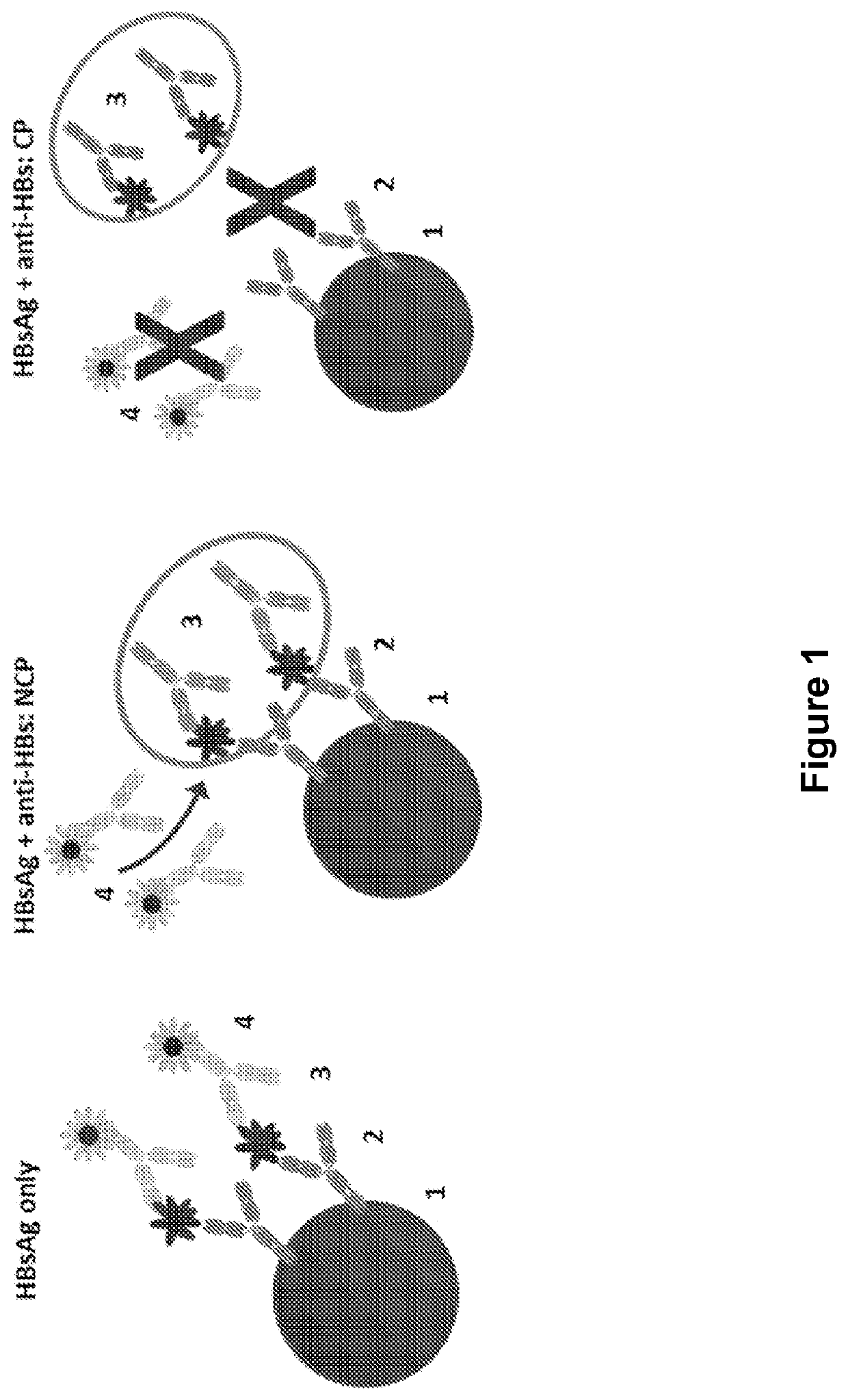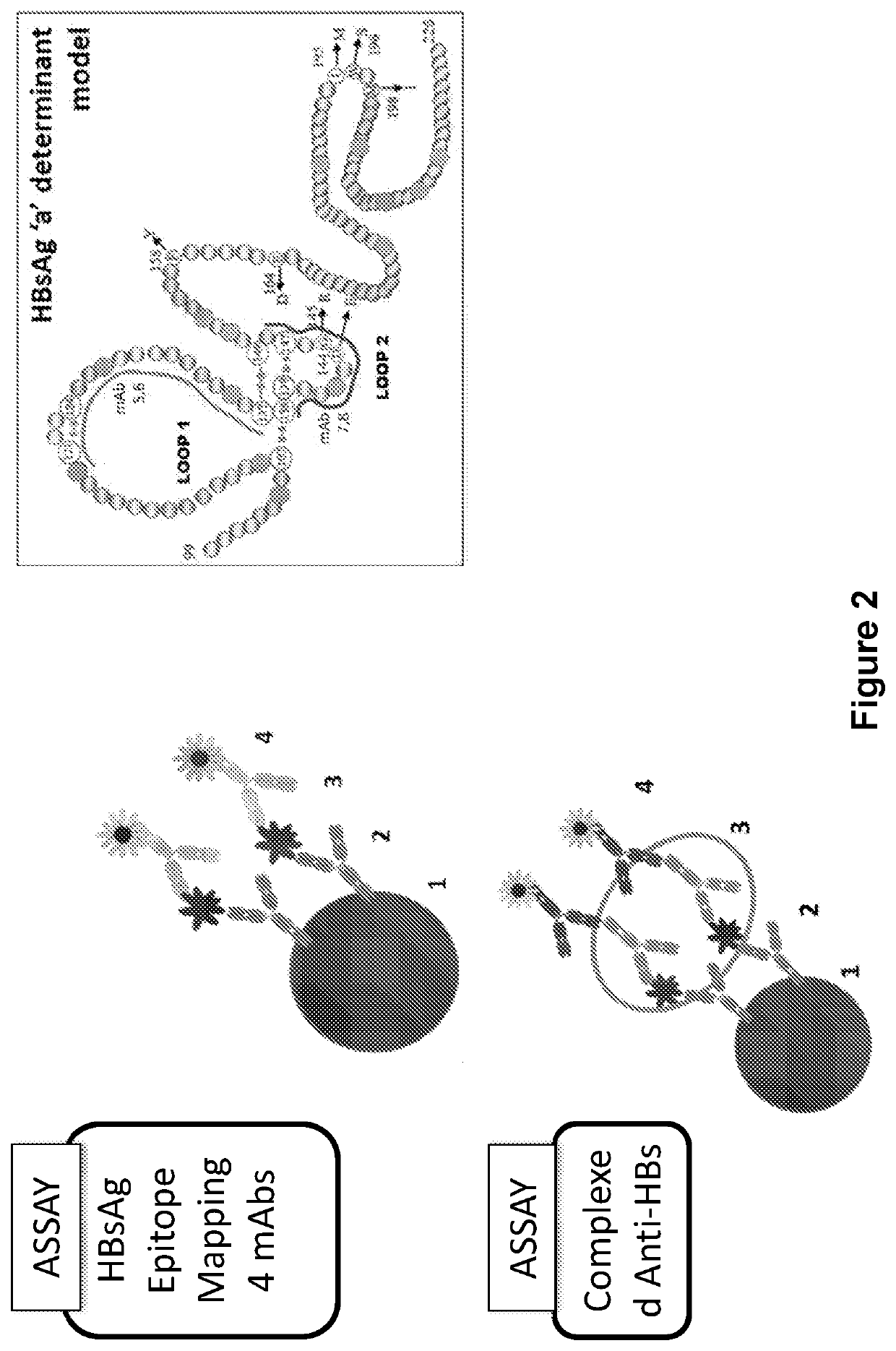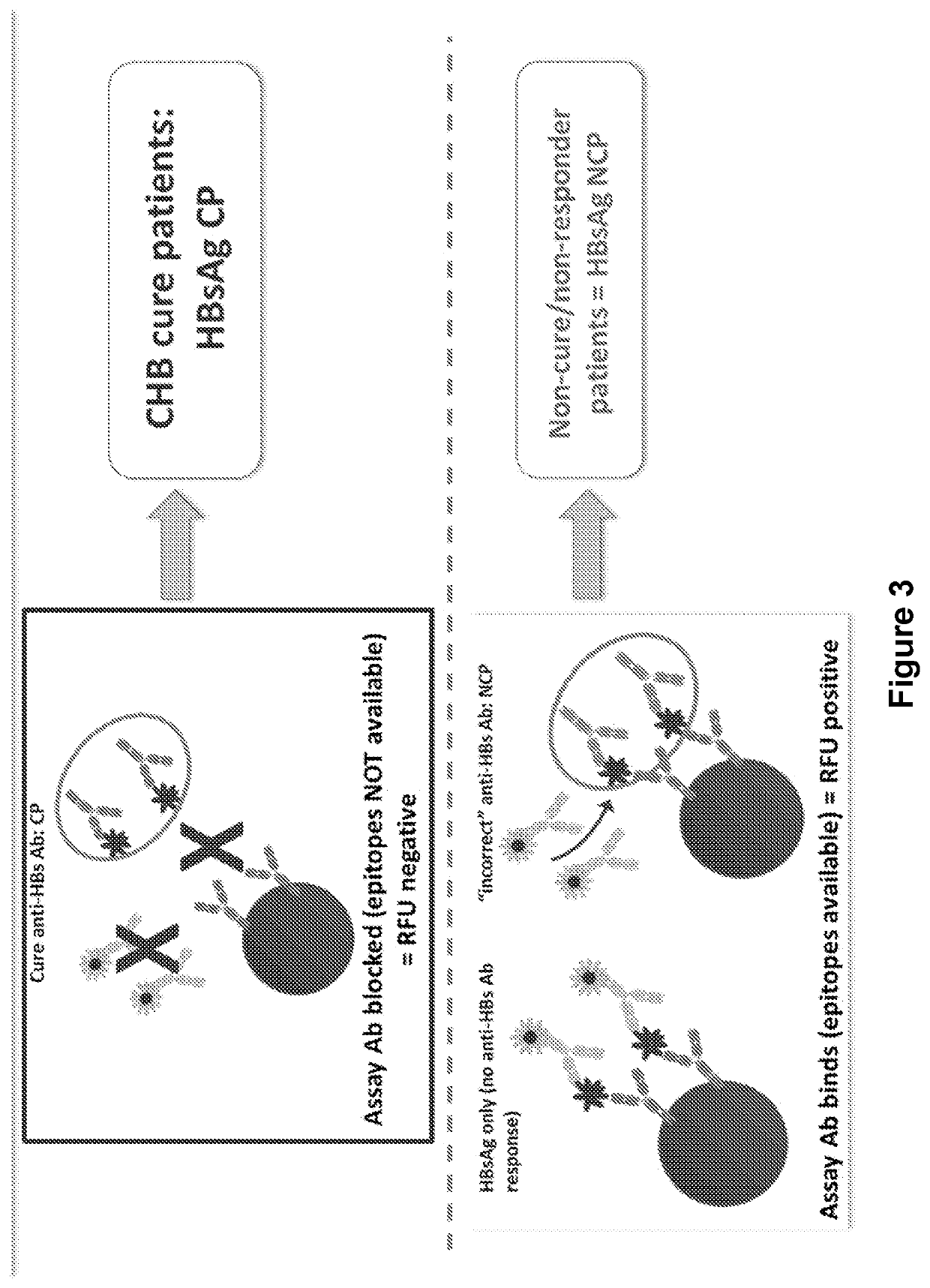Assay for determining hepatitis b clearance
a technology of hepatitis b and antibody, applied in the field of identification of antibodies, can solve the problems of high cost, questionable benefit, and liver failure of chb, and achieve the effects of reducing the exposure of the subject, reducing the exposure of hbv to anti-virals, and significant economic saving
- Summary
- Abstract
- Description
- Claims
- Application Information
AI Technical Summary
Benefits of technology
Problems solved by technology
Method used
Image
Examples
example 1
Development of Clearance Profile Assay
[0089]A multiplex bead-based flow cytometric platform is used to develop an HBsAg epitope assay and establish and map the HBsAg profile of epitopes which constitute the clearance profile of HBsAg epitopes (CP HBsAg epitopes). The “clearance profile of epitopes” or “CP-associated epitopes” are those targeted by an individual's antibodies. When all epitopes are bound by the antibodies generated by the individual, clearance of HBsAg can be expected, wherein the target epitopes are those defined by the consensus sequence SEQ ID NO: 1 on Loop 1 of HBsAg and SEQ ID NO: 15 on Loop 2 of HBsAg. Up to four epitopes are assayed or circulating antibodies specific for up to four epitopes provided that at least one epitope is on Loop 1 and one epitope is on Loop 2, each as defined by SEQ ID NOs: 1 and 15, respectively. The assay is derived from an assay by Lim et al. (2014) Hepatology 60 (1) supplement: 1623, 980A. Briefly, the HBsAg multiplex immunoassay com...
example 2
Selection of mAbs
[0090]The 4 anti-HBs mAbs utilized in the HBsAg multiplex assay were selected and sourced to provide broad coverage of epitopes with reactivity against the HBsAg Loopl and Loop 2 epitopes wherein the target epitopes are those defined by the consensus sequence SEQ ID NO: 1 on Loop 1 of HBsAg and SEQ ID NO:15 on Loop 2 of HBsAg. The anti-HBs epitope recognition sites are indicated in FIG. 2. The high level of epitope coverage provided by the 4-Plexed mAbs enabled analysis of the HBsAg profile according to the mapped epitope availability, wherein the target epitopes are those defined by the consensus sequence SEQ ID NO:1 on Loop 1 of HBsAg and SEQ ID NO:15 on Loop 2 of HBsAg.
example 3
Optimization of Assay / Dynamics
[0091]The HBsAg profile assay was developed and optimized using HBV A2 adw2 strain HBsAg, which forms common basis of the majority of generic HBV vaccines and thus represents a relevant baseline or backbone for comparison of HBsAg epitope recognition. The HBsAg source was primarily HBsAg patient sera, confirmed by HBV sequencing as wild-type A2 adw2 (compared to consensus sequences), with confirmation using recombinant wild-type A2 adw2 HBsAg from cell culture supernatant. Assay development was exemplified with mAb5 and / or 6 (Loop 1) and mAb7 and / or 8 (Loop 2). Prepared bead sets that were labeled with a concentration series of the mAbs are incubated against a series of concentrations of HBsAg. These concentrations represent standardization of HBsAg. Conditions were identified which corresponded to comfortable fluorescent readout (within the range of 10000-20000 RFU), without causing overloading and aggregation of the bead / mAb-HBsAg complexes. An assay ...
PUM
 Login to View More
Login to View More Abstract
Description
Claims
Application Information
 Login to View More
Login to View More - R&D
- Intellectual Property
- Life Sciences
- Materials
- Tech Scout
- Unparalleled Data Quality
- Higher Quality Content
- 60% Fewer Hallucinations
Browse by: Latest US Patents, China's latest patents, Technical Efficacy Thesaurus, Application Domain, Technology Topic, Popular Technical Reports.
© 2025 PatSnap. All rights reserved.Legal|Privacy policy|Modern Slavery Act Transparency Statement|Sitemap|About US| Contact US: help@patsnap.com



